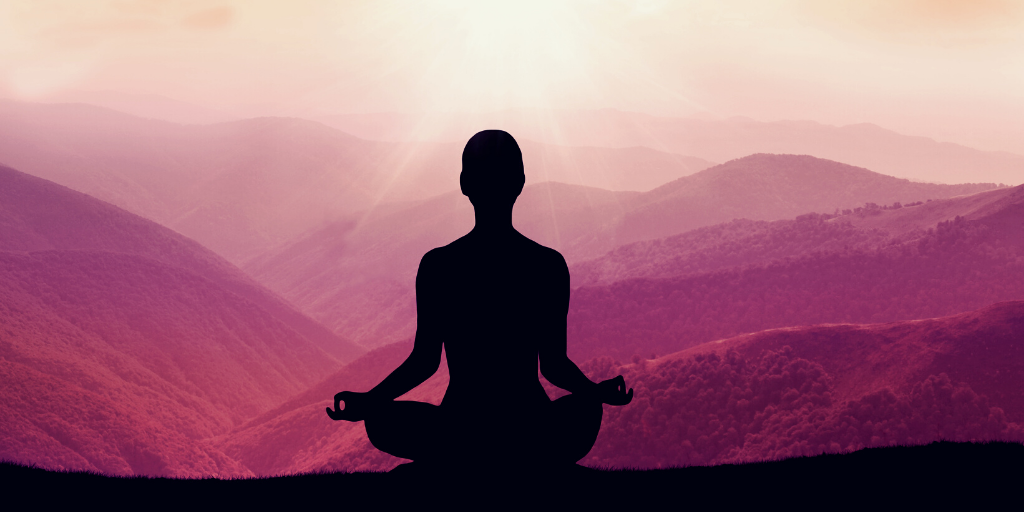Quick question for you:
Q On a scale of 1–10, what’s your stress level right now? Turn to your imaginary or real partner!
Let’s say 1 is “I feel like I’m lounging on a pristine beach, watching the glistening waves and sipping some refreshing coconut water” and 10 is “It’s not pretty in my world! I’m about to burst into a million pieces and rain down all over the neighborhood! You might want to make a run for it!”
Of course, I’m hoping the number you picked is closer to 1 than 10. But even though we’re reaching the end of what turned into a strange and difficult school year, the level of pandemic-related uncertainty and risk we continue to face is making higher-than-normal stress a steady if unwanted companion for many of us.

Not all stress is harmful. But chronic stress – the pandemic-induced kind – is. The latter can, among other things, increase risk of cardiovascular disease, impair cognition, and suppress your immune system.
Trying to ignore the stress can lead to choosing unhealthy behaviors to soothe ourselves – behaviors that just make things worse. Consuming one too many brownies, diving into the nearest device to reemerge an hour later bleary-eyed, tossing and turning at 3 a.m. trying to get a grip on tomorrow, screeching at a loved one … of course, I’m not saying I’ve done any of these since the COVID-19 crisis started!
It’s more than just a nice idea to practice stress reduction these days. It’s absolutely necessary if you want to continue having the inner resources to support others – your students, their families, your colleagues, your loved ones, the communities you care about.
It’s also important because – and I don’t mind being a broken record here – before and after all that you do and give, you are a gift. It’s actually your responsibility to take care of the gift that you are.
In an earlier post I shared a stress-reducing breathing technique. Here I want to introduce a body scanning practice. There are many variants; I learned this one from a meditation teacher named John Travis.
You might try it daily for the coming week. If you plan to do it at the same time each day, that will increase your chances of following through. This practice is well suited to doing alone, since it’s silent and you’ll want to go at your own pace. I suggest you read through the instructions a couple times; then set them aside while you do the practice.
Body Scan (“Waters of Mindfulness”):
- Find a place where you can be alone for three minutes. Sit or lie comfortably (or as comfortably as you can), with your eyes closed.
- Bring your attention to your scalp. Imagine soothing water spreading slowly and gently over your scalp. Observe that as the imaginary water spreads, it brings a sensation of relaxed awareness.
- Imagine the water spreading down over your face, ears, the back of your head. Continue to notice the sensation of relaxed awareness brought by the spreading water.
- Imagine the water flowing down your neck, onto your shoulders, down your arms, into your hands, and out through your fingers.
- Bring your attention to your collarbone and imagine the water spreading from that point down over the front of your torso, rinsing away tension and leaving relaxed awareness.
- Bring your attention to the back of your neck and feel the water spreading slowly down your whole back.
- Now imagine the waters of mindfulness flowing gently down over your thighs, knees, calves, and feet.
- Before opening your eyes and rejoining the world, take a quiet moment to savor the time you spent on your well-being and any feelings of relaxed awareness. If you don’t experience a big change in the latter, don’t worry or judge; sometimes we need to do a practice several times before we notice benefit.
I recommend checking in with yourself or a buddy during the week to reflect on how it is going, and again at the end of the week to debrief on the experience.
Q How did it feel to experiment with this body scanning technique? Turn to your imaginary or real partner!
You might be thinking:
“It’s interesting to do a guided visualization that I can also feel physically. It’s incredibly pleasurable and soothing, like a free massage.”
“I didn’t connect with this one. I couldn’t stop thinking about all the stuff I’ve got to get done. The breathing practice worked better for me. I’m going to pick up that one again and do it this coming week.”
“This reminded me a little of what I’ve done at the end of yoga classes. Sometimes it makes me so relaxed, I fall asleep. I’m good with that, because I’ve been underslept lately.”
“I tried doing it with other people around. Big mistake! I felt self-conscious and distracted. Next time I’ll arrange to get some privacy for a few minutes.”
“I’m doing this practice when I first wake up, before I get out of bed. It’s helping me enter my day in a more calm, alert way.”
After a week, if you enjoy this practice, you might increase the time by a few minutes so you can slow the pace. You might also include more body parts in your scan. For example, instead of visualizing the water flowing down your arms, hands, and fingers, you might picture it flowing down your upper arms, elbows, elbow crooks, lower arms, wrists, backs of hands, palms, and fingers. However, if you find more detail too mentally stimulating, keep it simple. Experiment and see what works best––and by “works,” I mean you emerge feeling relaxed and refreshed.
Next week’s post in the Teacher Wellness Blog Series will explore the practice of attending to our feelings.
